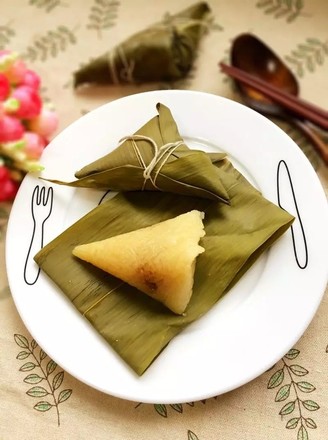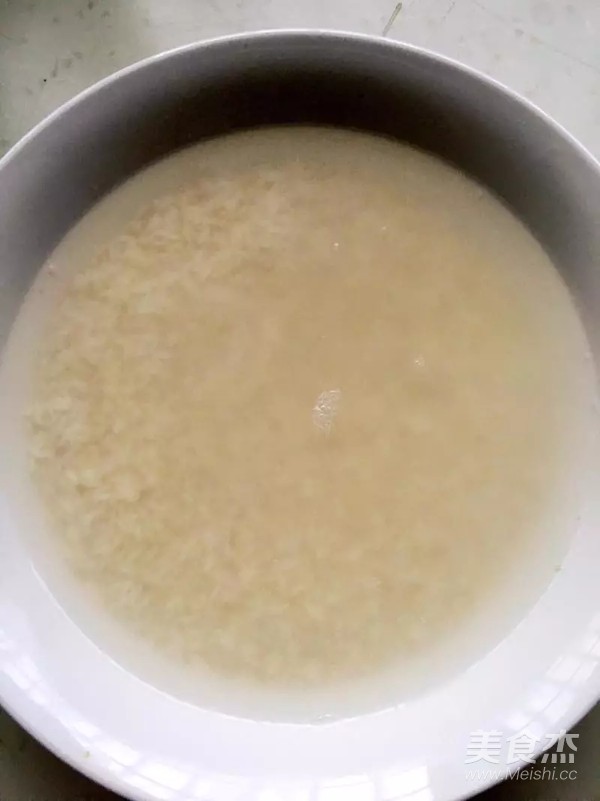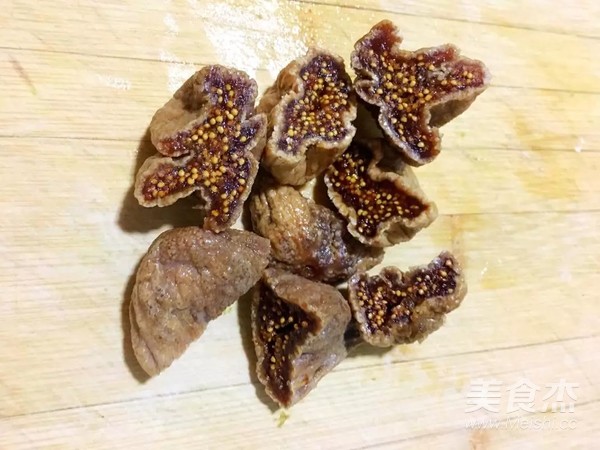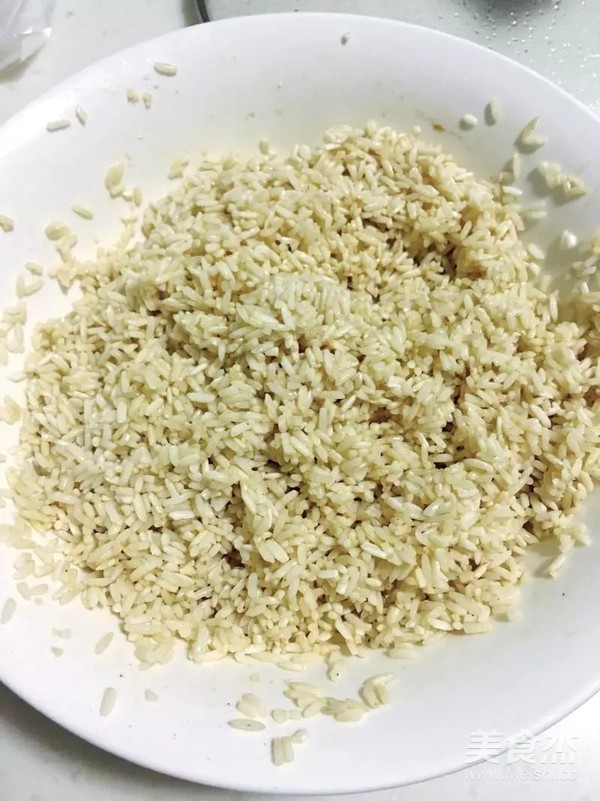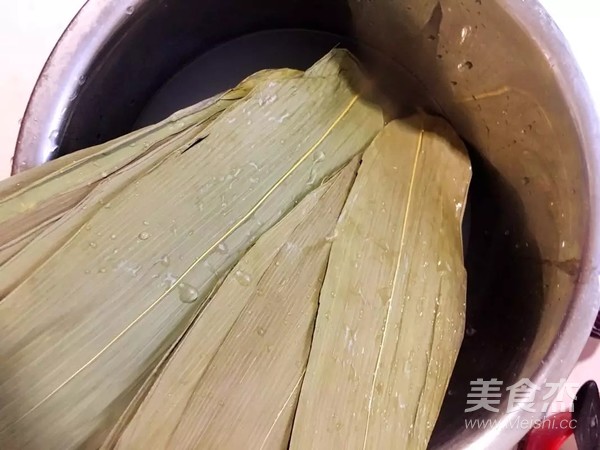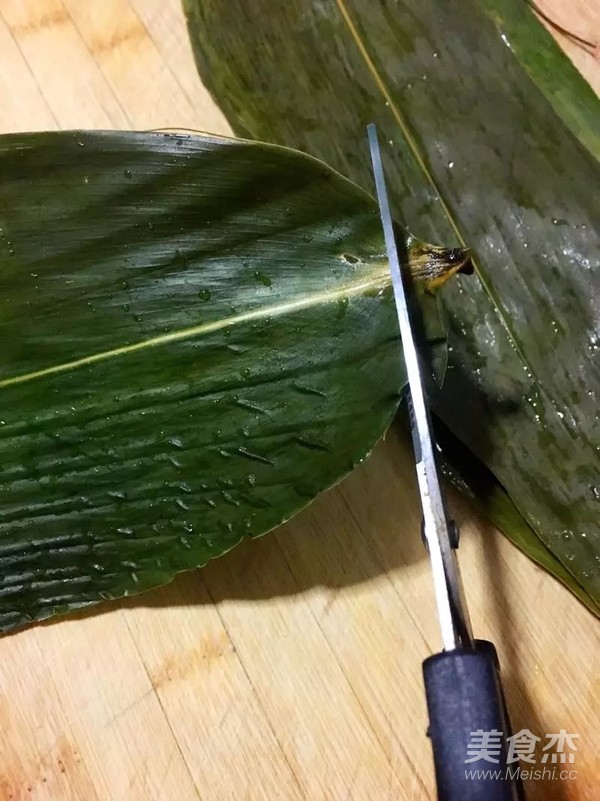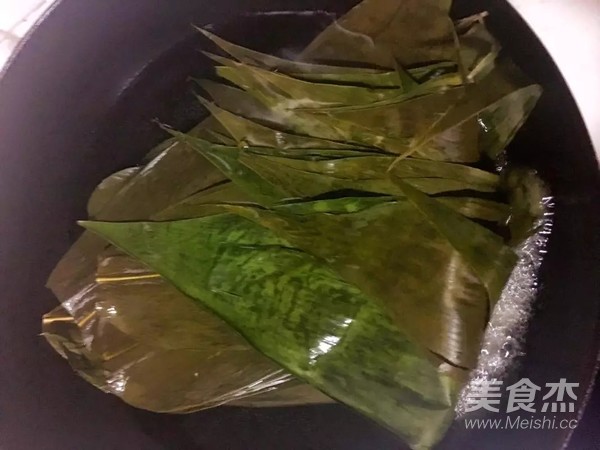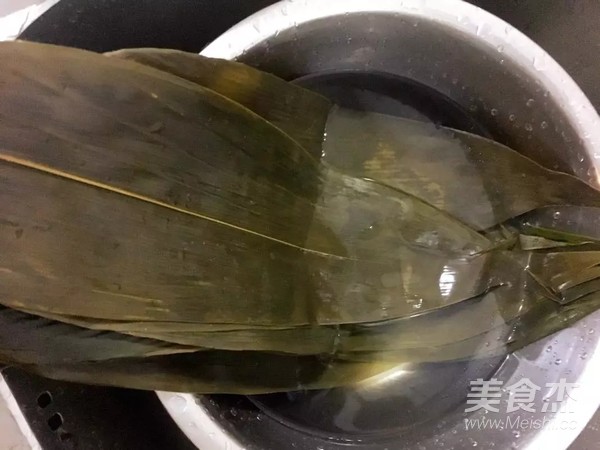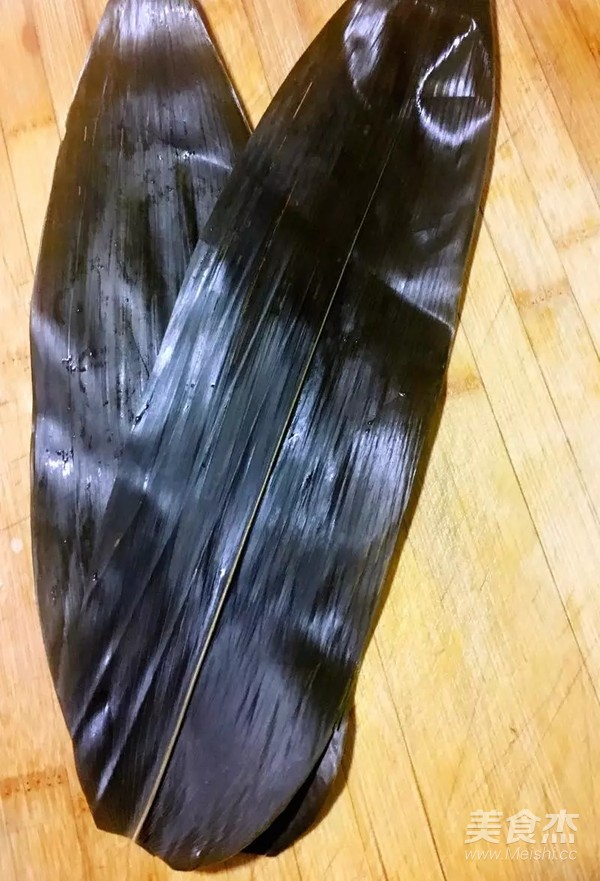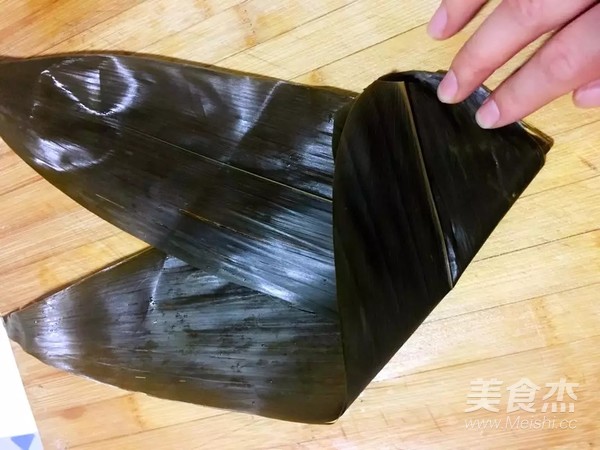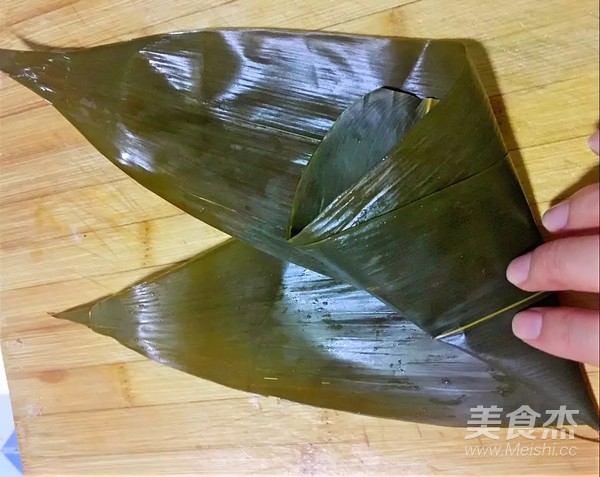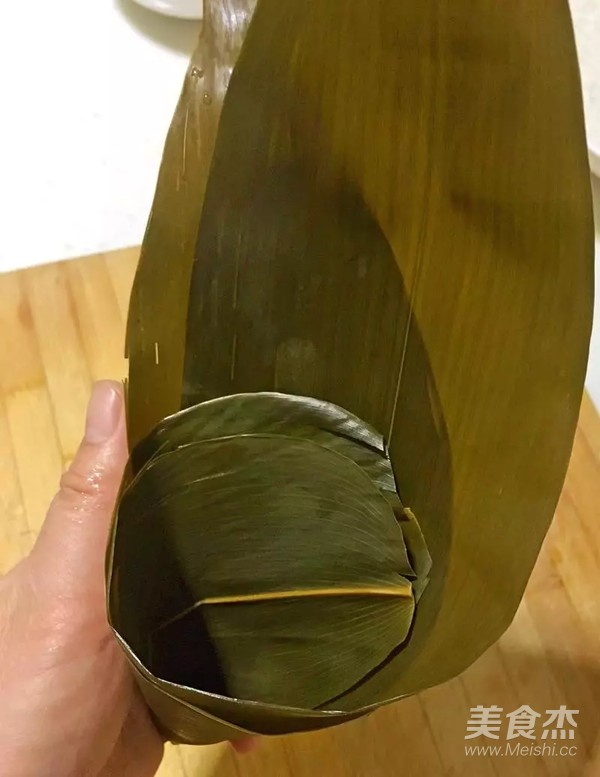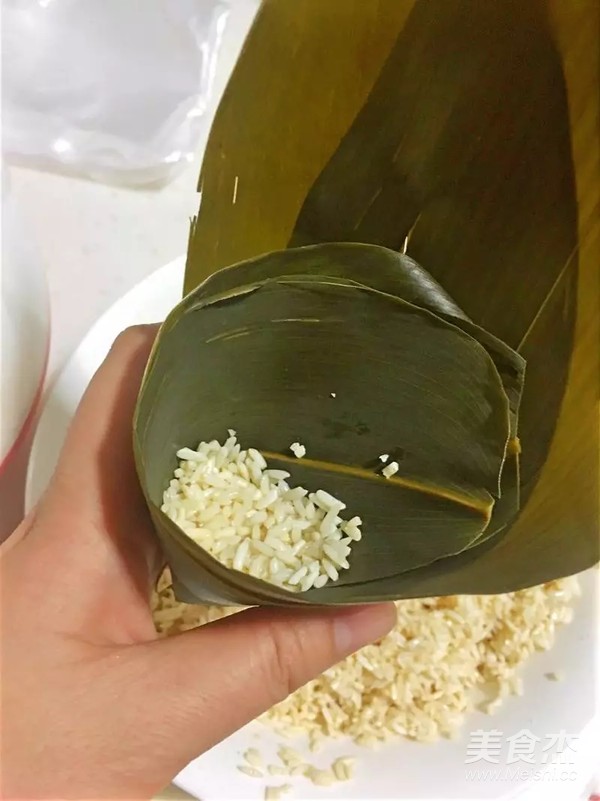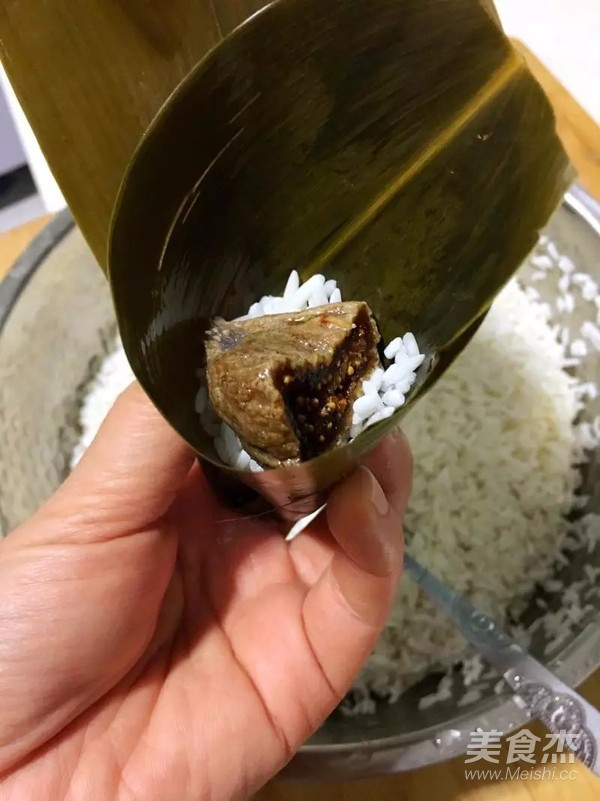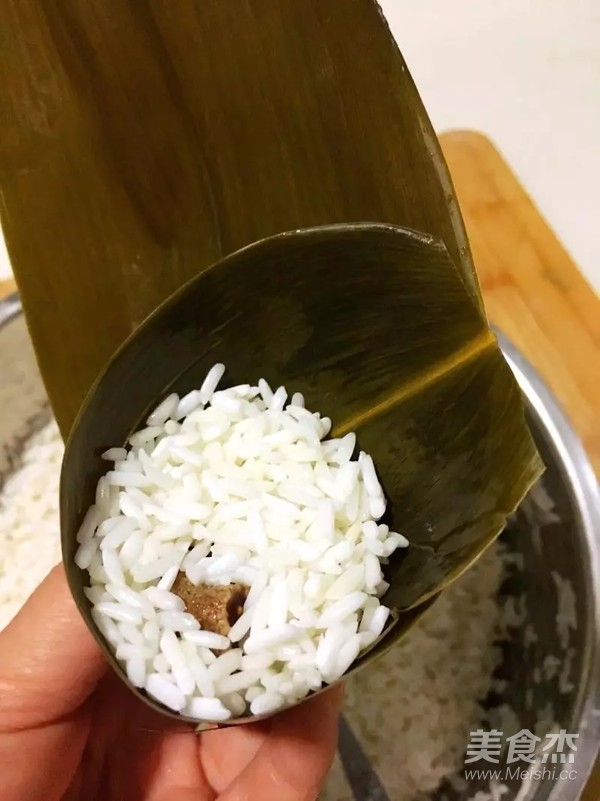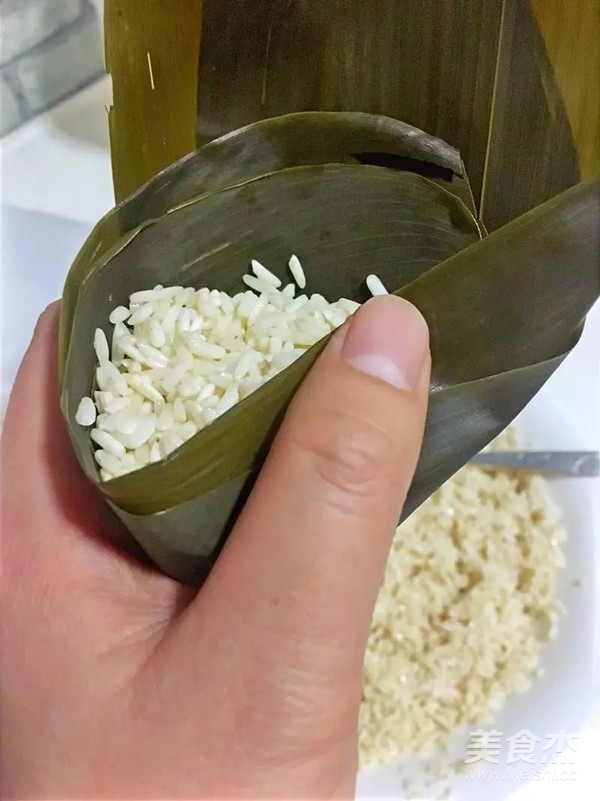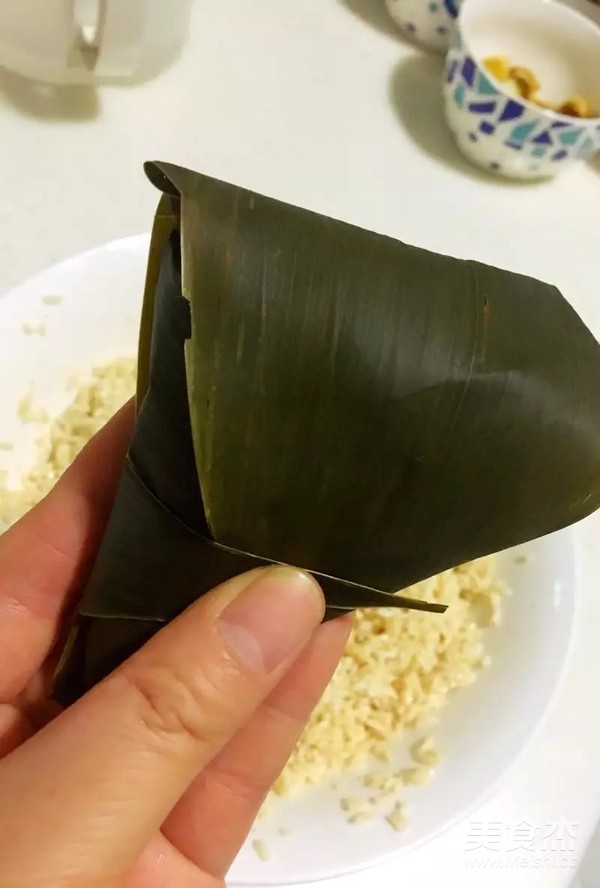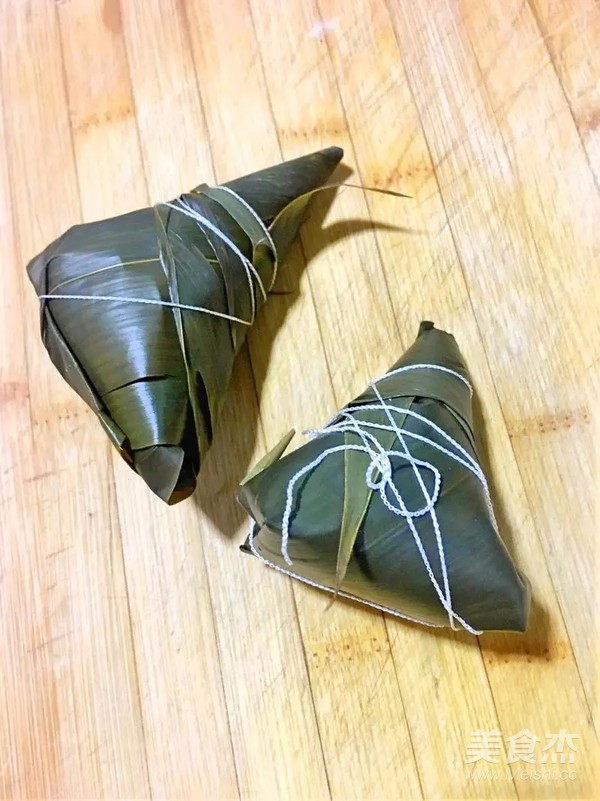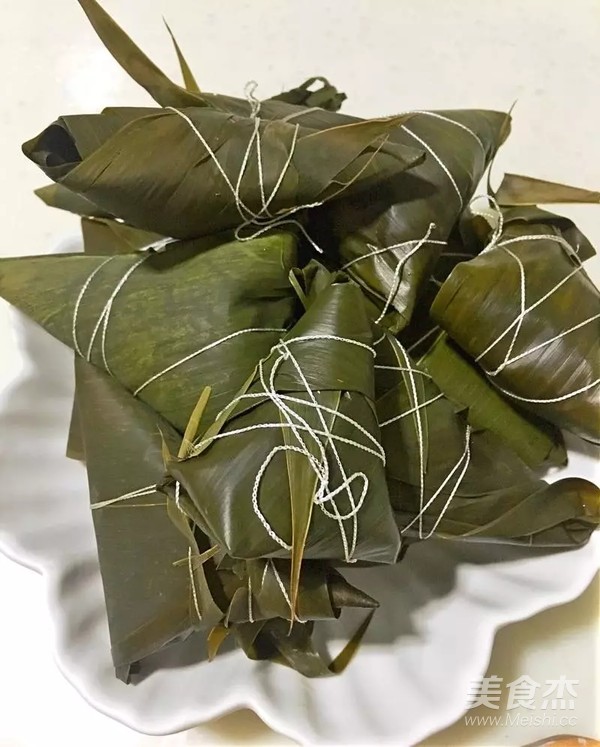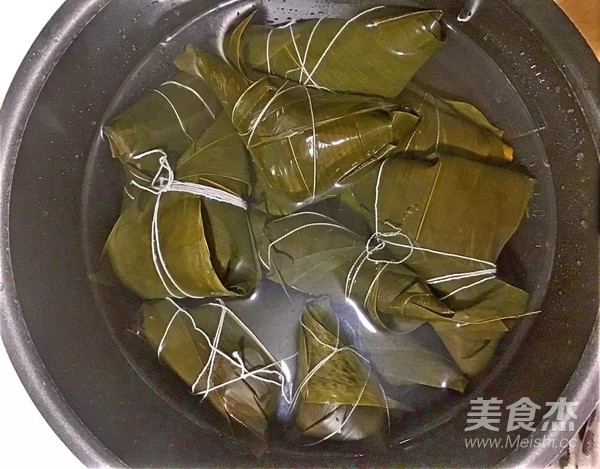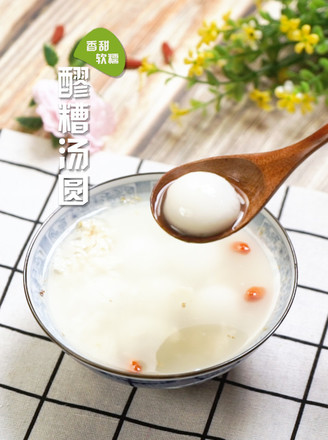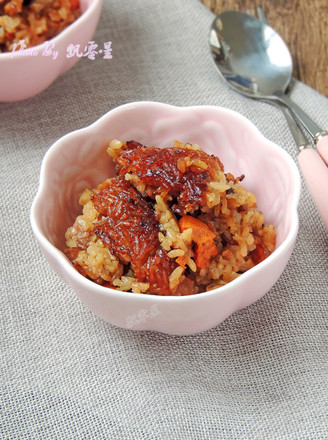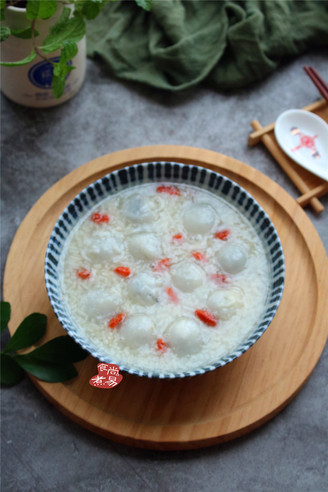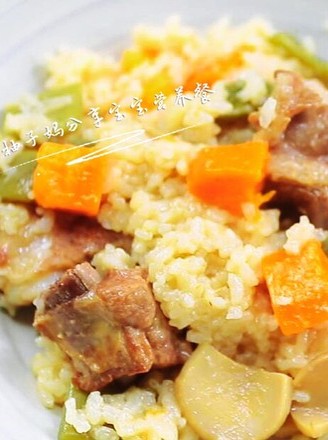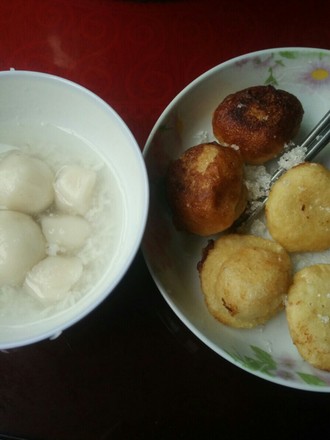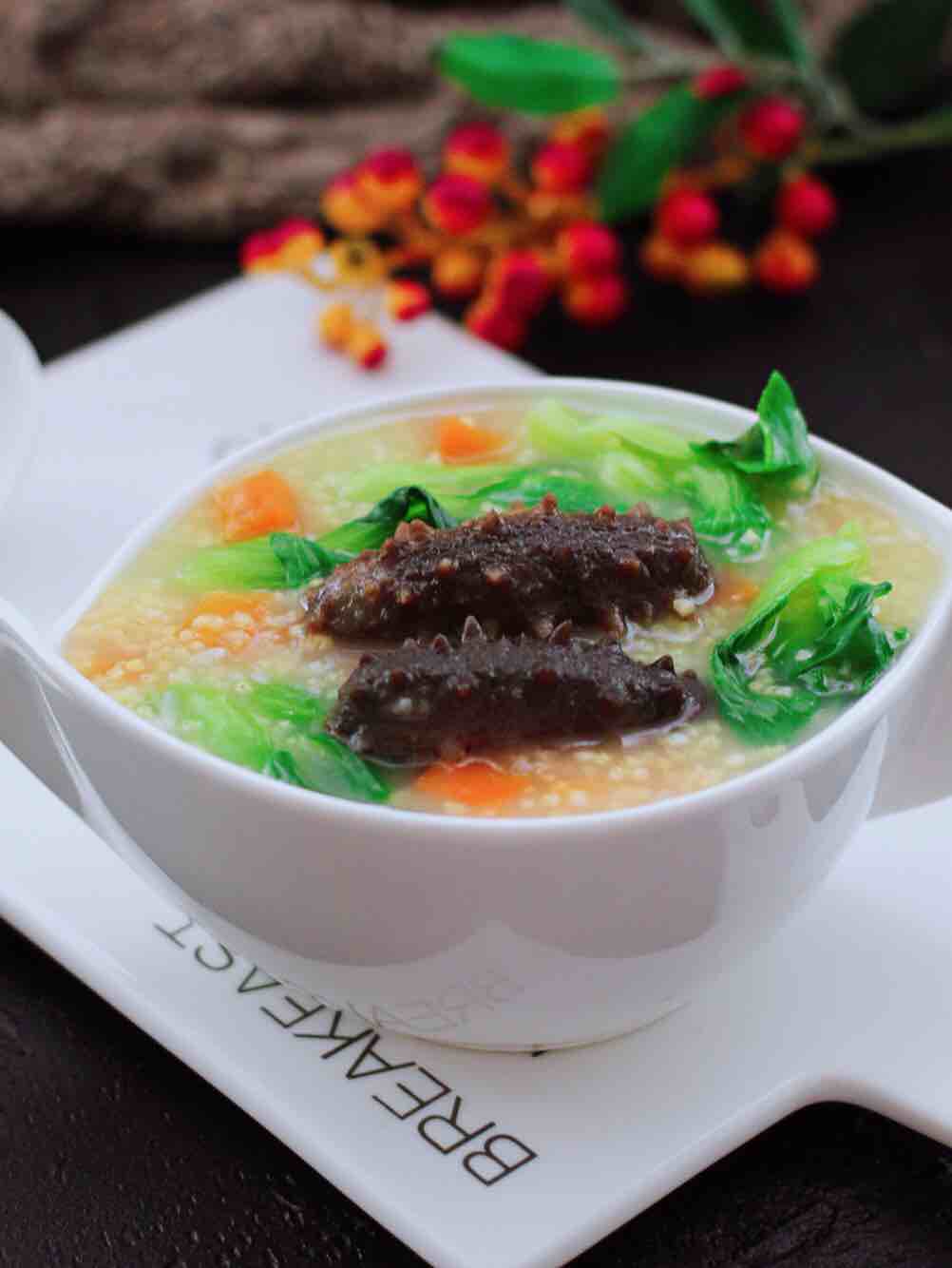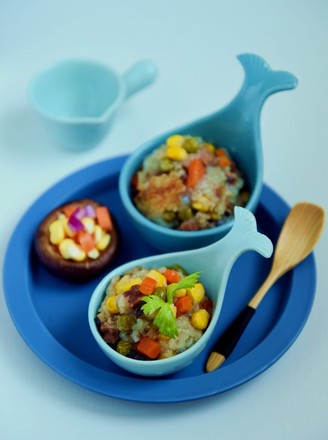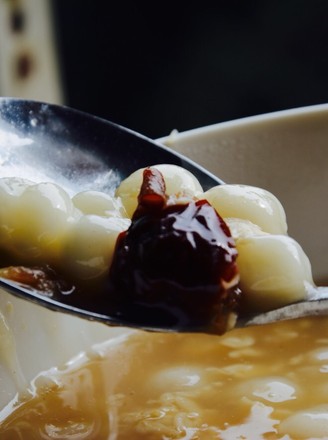Dried Fig Dumplings
1.
Wash the glutinous rice and soak it in clean water for 2 hours. Keep the rice water for later use
2.
Dry the figs and cut them in half
3.
Drain the glutinous rice, add sugar and stir well for later use
4.
Soak the dried zongzi leaves in the rice-washing water for a while until they become soft, and rinse them off with clean water
5.
Fry the upper stem with scissors
6.
Put it in a pot of boiling water and cook for 10 minutes
7.
Take out cold water and rinse again to control the moisture
8.
Two zongzi leaves overlap at the bottom
9.
Roll up the bottom diagonally
10.
Roll up again
11.
Form a funnel with a bottom seal
12.
Fill the bottom of the funnel with a spoonful of glutinous rice and compact
13.
Put in a piece of dried figs
14.
Put another spoonful of glutinous rice on top
15.
Fold down the excess leaves on the upper part with your hands facing inward
16.
Cover it with the leaves above, press it tightly, and roll it up
17.
Tie it with cotton thread
18.
Do the others in turn
19.
Put it in a pressure cooker, add water that has not been used for rice dumplings, turn on the beans and tendons to cook, and then simmer until the steam runs out automatically after the program is over.
Tips:
The bottom of the zong leaf funnel must be sealed so that there is no gap, otherwise the rice will leak when cooking. If you don't have a pressure cooker, you can cook it in a boiling pot for half an hour and then simmer for 10 minutes.
How to choose figs? Choose large ones. Such fruits have full flesh and more water; try to choose darker ones, so that the fruits are ripe and taste sweeter. When choosing, you can squeeze the surface of the fruit gently. Choose softer ones; avoid choosing figs with larger tail openings, which are not hygienic because of the dust and bacteria that can be contaminated in the air. I chose to use Terais dried figs. The fruit is big and sweet, with thick nectar, and the fruit is full, with thin skin and plenty of flesh, soft and tender.

